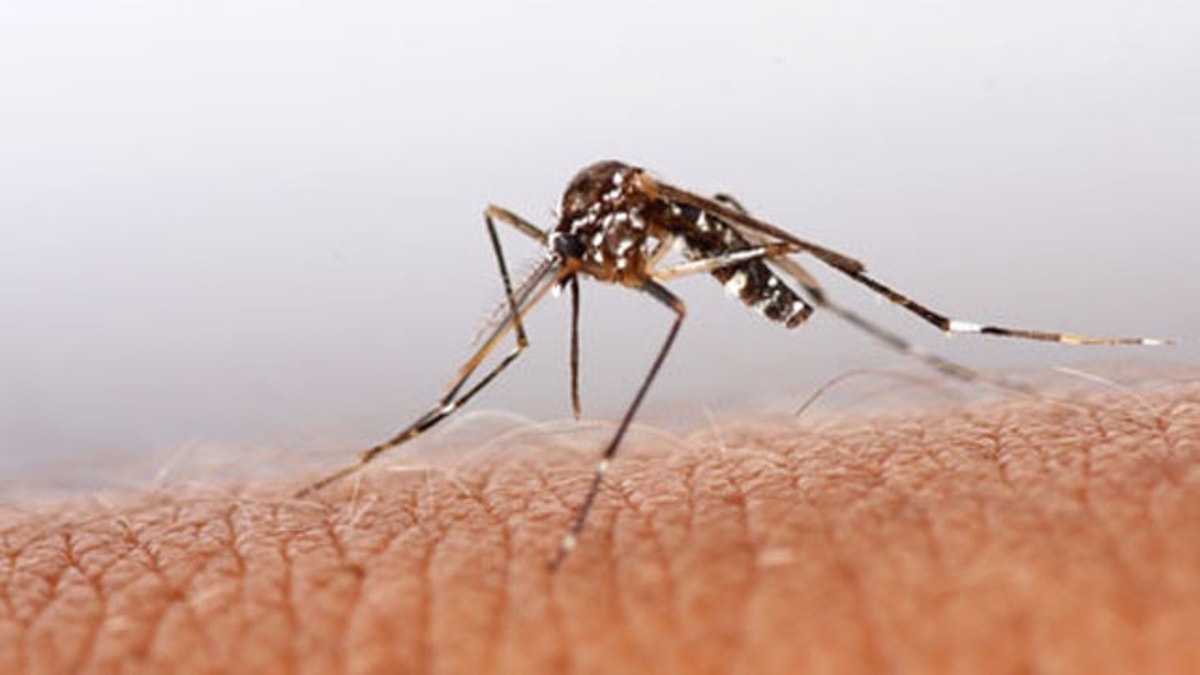
As doctors and physicians work around the clock in Southeast Asia to treat populations plagued with highly infectious malaria, many researchers are concerned over a growing threat in the region developing among the parasites that cause the disease: drug resistance.
More and more, patients in Cambodia have been presenting with malaria caused by resistant forms of the Plasmodium falciparum parasite, which is no longer sensitive to the drug, artemisinin – the first line of defense doctors have against malaria. Determining which patients have these artemisinin-resistant protozoa has been a struggle, as they have the same symptoms as other malaria patients and initially respond similarly to treatment.
“Over time, since I’ve been working, the number of patients with drug resistance has gone from something like 0 percent to 60 percent,” Dr. Rick Fairhurst, from the National Institutes of Health (NIH) and who works in the region, told FoxNews.com. “From 2005 to 2013, every year, the proportion of patients that still have parasites at 72 hours has been steadily increasing.”
But now, Fairhurst, the National Institutes of Health and the Cambodian National Malaria Center have a developed two novel tests that can distinguish which parasites respond better to treatment. According to the scientists, these simple in-vitro and ex-vivo trials can deliver results much faster than the current clinical approach used to monitor drug sensitivity in patients.
The main difference between drug-sensitive and drug-resistant P. falciparum parasites is the speed with which they clear from the body. According to Fairhurst, if the parasites quickly clear from the blood after artemisinin is administered, the researchers believe they have all been cleared. But with some drug-resistant parasites, it takes an extremely long time for them to clear from the blood once the drug has been given.
And though they seemingly “clear” from the blood, it does not necessarily mean all the parasites have been eradicated.
“It’s not that the drug is failing; it’s just that the parasites are clearing more slowly,” Fairhurst said. “When I look at a blood smear, the parasites won’t show up in the slide. But there are really about 100 million parasites in the blood stream, you just can’t see it. They’re still there, and once the drugs are gone, they’ll come back.”
Fairhurst explained that the artemisinin does destroy some of the drug-resistant parasites, but its presence in the body also prompts other parasites to exit the blood stream and remain dormant until the drug clears. But not all slow-clearing parasites are necessarily drug resistant, making them even harder to identify.
Hoping to better understand the mechanism behind the parasites’ drug resistance, Fairhurst and his fellow researchers working in Cambodia did some math modeling, which suggested that the parasite’s ring stage – the period of time right after it’s born – is when the protozoan first becomes resistant to artemisinin. The P. falciparum ring stage lasts anywhere from 0 to 18 hours after birth.
“In the first 18 hours of life, they’re circulating in blood,” Fairhurst said. “After that time, they bind to your blood vessels in virtually every organ in the body and then just disappear. When we look at parasites coming directly out of patients, they can be 0 to 18 hours old. So it’s the very young stage which is resistant to the drug.”
After determining the ring stage to be crucial to the parasites’ resistance, Fairhurst extracted a series of parasites from his patients and synchronized them in the lab, creating parasites at three different stages – early ring stage (0 to 8 hours), later ring stage (9 to 18 hours), and trophozoite stage (18 to 21 hours). The average lifespan of a P. falciparum parasite is 48 hours.
“When we adapt them, we synchronize them at young ring stage and hit them with artemisinin for six hours. Then you wash the drug away, mimicking the high brief dose that parasites see in the patients,” Fairhurst said. “We then look at the parasites in the blood and score them as dead or alive. It’s pretty simple in scoring; they’re either dead or at some degree of maturation along the life cycle.”
The second test Fairhurst developed was quite similar to the first test, but rather than artificially synchronizing the parasites in the lab, he and his colleagues simply extracted parasites from patients with malaria who had presented with early, ring-stage protozoa (which they most often do). It also involved adding artemisinin to the parasites for six hours and counting them after 72 hours.
The more survivors after the three-day waiting period, the more resistant the parasite. Fairhurst noted that among the resistant parasites, they found some that were 10 times more resistant to artemisinin than others, indicating some variation among drug resistance.
The current way to determine if a malaria patient is drug resistant is extremely labor intensive, requiring doctors and nurses to admit patients to hospitals and count the number of parasites in their blood stream every six to eight hours for two to three days after treatment. These new tests will bypass the need for this process altogether.
“It’s faster and certainly simpler,” Fairhurst explained. “You don’t have a doctor and nurse working around the clock. You still get your answer, but it takes a lot less infrastructure and expense to screen significant numbers of people.”
Fairhurst said that not only does their work make things easier for physicians treating patients in Cambodia, but it also gives them a better understanding of the P. falciparum parasite. Future researchers could potentially use the most drug-resistant parasites that they find and test new drugs on them to see if they are effective.
“I think this is a very unique mechanism of resistance, and the more people who work on this problem, the more successful this field will be,” Fairhurst said.
The research was published Sept. 10 in The Lancet Infectious Diseases.
